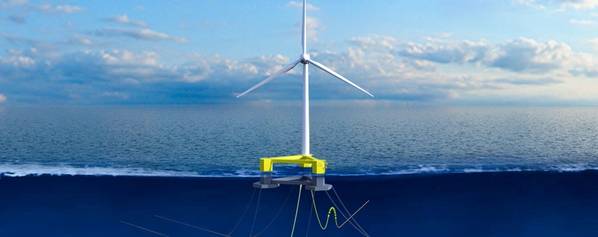
DNV has presented Wison Offshore & Marine (WOM) with a Verification Letter for its "w.semi" floating wind foundation. The Verification Letter demonstrates the technical feasibility and commercial readiness of the technology.
Wison Offshore & Marine's "w.semi" is a new concept that the company has been developing as a floating wind foundation/platform. ,
It is said to be suited for floating wind installations at water depths ranging from 50 m and up. Issuing a Verification Letter concludes the first stage of the certification process.
“DNV has been working with WOM to advance the w.semi™ technology since 2020”, explains Kim Sangaard-Mørk, Executive Vice President for Renewables Certification at DNV. “We are proud to bring our extensive offshore experiences into China as certification is very important for demonstrating the performance, reliability and commercial viability of new technologies and concepts. Mitigating risks via certification is particularly valuable for floating offshore wind projects in securing project finance and demonstrating the operational application.”
“Since we successfully delivered China’s first floating wind platform in summer 2021, Wison Offshore and Marine has accelerated the development of offshore wind technology. Our goal is to build the floaters in China for Europe and the North American markets. We are continuously refining our design of w.semi™ with many of the supporting technologies. Securing certification is the key aspect of our technology development, and we are very pleased to reach this important milestone in the certification process with DNV”, explains Dr. Weimin Chen, Director of WOM’s Wind Technology.
Floating wind turbines give access to abundant wind resources over deep water – at least four times as much ocean surface space compared with bottom-fixed wind, DNV says. According to DNV, this increases flexibility in site selection, including the possibility to target areas with higher wind speed, and those with lower social and environmental impacts.
According to DNV’s latest Energy Transition Outlook report, floating offshore wind is anticipated to generate 15% of all offshore wind energy by 2050. To put this into context, this is the equivalent to a development of more than 3,000 times the size of Hywind Tampen, the world’s largest floating offshore wind farm, currently under construction in Norway.